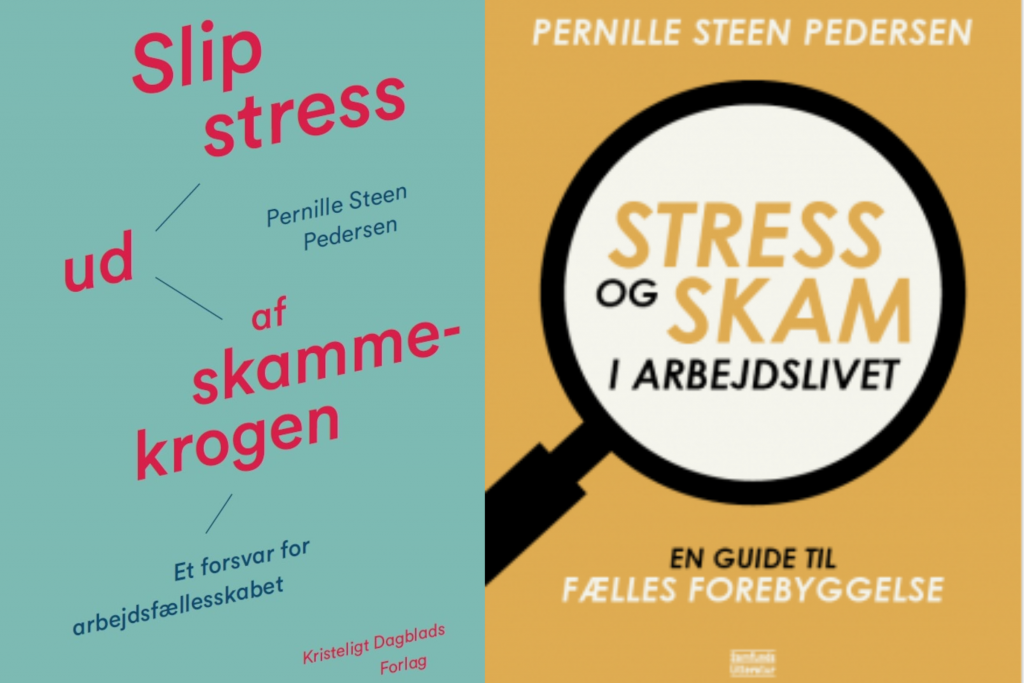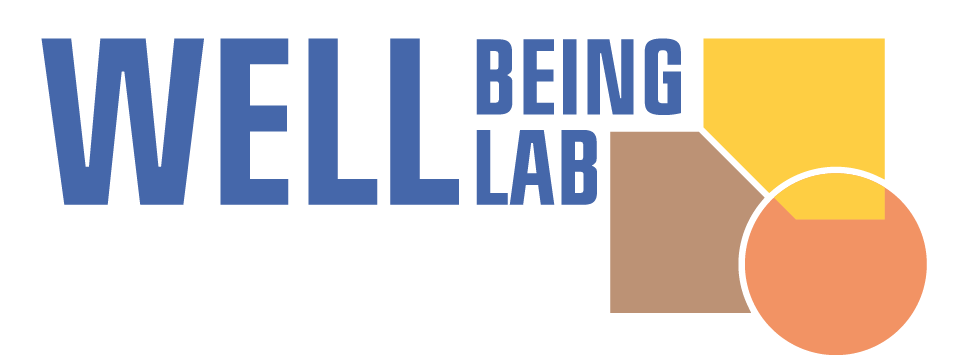Stress and shame
Stress as a relational phenomenon related to feelings of shame.
Pernille Steen Pedersen is a leading stress researcher and has developed an understanding of stress as a relational and intra-relational phenomenon that concerns a deeper experience of shame.
Introduction
Inspired by Michel Foucault, Pernille approaches the phenomenon of stress using what she calls “problem-analysis”. It is an explorative approach to real life challenges centered in lived experiences, dialogue and open inquiry. Pernille has used this methodology to conduct empirical analyses on work-related stress across a wide range of private and public enterprises. A central discovery in her exploration of the complexities underlying stress is that shame plays a central role when people experience decreased well-being and work-related stress. In introducing the notion of shame sheds new light on the general understanding of stress and how intra-personal conflicts plays a significant role.
In her research on work-related stress Pernille has been preoccupied with describing the relation between acknowledgement and stress, for which she employs the notion of shame to, among other things, describe an experience of not being able to receive recognition. This is illustrated in the following quote from an interview Pernille conducted with an employee, who reflects about her experiences just before a stress-related sick leave:
“I was simply incapable of receiving the praise that my manager gave me. I told her that her praise of me was in fact undeserved. She tried to convince me that she meant it. I heard what she said, and I was certainly happy about it, but I kept having the feeling that it was undeserved and that I had cheated her.”
This employee describes a barrier to accepting praise in situations dominated by a firm conviction and feeling of not deserving it. Pernille saw in her work, however, that this type of expression was not just some random logical contradiction or stand-alone case, rather it was emerging as a central pattern across many interviews concerning employees’ reporting sick with stress. It remained blurred to the interviewees why, in certain circumstances, appreciation and praise seemed to have no or even an opposite effect. Pernille investigated this problem as one of acknowledgement and mobilized the notion of shame as a conceptual description to explain and account for this phenomena as an important aspect to understand stress. She found that in some cases there seem to be an obstacle to recognition and shame is a part of the reason why.
In this way, shame is deployed both an analytical language for underlying reasons for stress and as a conceptual label describing a phenomenon; a phenomenon Pedersen suspects also exists among students. This research initiative will explore how and in which ways shame might play a role in experiences related to stress and well-being for students. Shame highly affect how a person responds to emotional demanding situations. In this project the notion of shame will be deployed to give insight into how students perceives themselves and emotionally demanding situations, which in turn may provide valuable information on how to work proactively with stress prevention at CBS.
Two books on stress and shame
In her book “Let stress out in the open”/ “Slip stress ud af skammekrogen – et forsvar for arbejdsfællesskabet” (2016) Pernille explains how to openly address the feelings of shame that potentially can lead to stress, significant decrease in well-being and in some cases sick-leave.

In her second book “Stress and shame in the work life”/”Stress og skam i arbejdslivet – en guide til fælles forebyggelse” (2021) Pernille goes even deeper into the issue of shame as relational phenomenon causing stress in modern work life. Through cases of employees and managers, and many real life illustrations and scenarios, the book addresses the complexity of stress and emphasizes that there are no quick fixes, when it comes to human emotions and relational dynamics, but that there are ways to work proactively with stress prevention collectively in the work environment. The book offers practical guides and methods to tackle stress relationally in the work place, and argues that a deeper understanding of the role shame plays in relational dynamics at work is essential in order to understand the roots of stress and to create environments less prone to stress.
Pernille Steen Pedersen, webinar on stress, shame and working at home in Covid-times, produced by CBS@home.
Stress as relational and intra-relational
According to Pernille there is a type of stress, which is dependent on a more profound problematic centered around shame; and that there are different forms of shame and problems of shame. This has important implications, because the notion of shame concerns how people see and experience themselves in relation to others and thus places stress in a relational and intra-relational context. Therefore reducing stress to an issue of the individual, whether the employee experiencing stress or the manager handling stress amongst the employees, would be insufficient and overlook some important correlations in the work environment, in the relational dynamics. Work-related shame is about “what I think/worry others think of me, routed in the fear of being exposed.” In a workplace, this can for example show up as:
- a worry that others will discover that you are not doing your job good enough
- a feeling off being under-qualified for a task, even if it might not be the case
- feeling pressure due to not enough time to complete a task satisfyingly
- as a sense of being wrong or a feeling that you did not act as you should have
- inability to live up to your own or others’ expectations
Understanding shame
Shame has been characterized as a root or master emotion attached to our survival in the group. In the wider literature shame is presented as a universal, self-conscious emotion associated with a negative evaluation of the self. Shame is a social emotion, because it pertains to an evaluation of others’ evaluation, or to social comparison (Gilbert, 2007; Tangney & Dearing, 2002; Tangney et al 2007; for an overview see Balsamo et al., 2015). Shame involves inferiority and the notion of being seen as inferior or incompetent, being small and worthless in the eyes of both the self and others (Lynd, 1958, Lindsay-Hartz et al., 1995; Tangney & Dearing, 2002). Shame leads to defensive actions (Tangney & Dearing, 2002) involving individual withdrawal and isolation (Lynd, 1958:27-34), and a desire to hide, disappear or escape from the situation (Nathanson, 1992).
“Shame is a human condition, which reminds us that we need acknowledgement and to belong somewhere, whether at work or in school” Pernille explains. It is normal to experience shame, but in some situations and environments shame can become harmful, which makes it both hard to ask for help and support, as well as to receive it. If shame is not seen and understood it “can cast a shadow over our togetherness, because it is closely intertwined with acknowledgement and loneliness” Pernille says.
Dimensions and triggers to stress
Three dimensions to stress
Pernille uses shame to describe three central, co-exciting stress-experiences, which intersects when people are experiencing work-related stress:
- First dimension: an intra-personal conflict between what I am and “the ideal (or perfect) me”.
- Second dimension: a feeling being incompetent in terms of performing activities in an adequate and skillful way accompanied with self-blame.
- Third dimension: a feeling of helplessness, in terms of perceiving that one cannot influence the situation and there is no one who can.
All three dimensions can be present at the same time in a given situation, but can vary to different degrees. These dimensions thus describe a dynamic state and the highest degree of shame is experienced when all dimensions are high.
Two sources are triggering stress
While the three dimensions concern aspects of shame, Pernille has equally explored what then triggers these feelings in people. Investigating the characteristics of situations capable of triggering the emotion of shame and the handling of them, Pernille could discern two different sources. On source is what she terms “relational shame”, which refers to situations concerning the relation to one’s peers (e.g., related to a person or situation being assessed, worry what others think, worries about being liked, fear of conflict, self-doubt in relation to others). The other source Pernille found to induce shame, termed “achievement shame”, arise not from the (real, perceived, or feared) judgement of others, but from within oneself – from one’s own conscience, often related to performance (e.g., feeling bad due to inability to complete a task satisfyingly, time pressure, feeling of under-achieving on a task).
